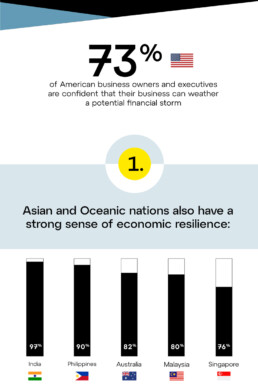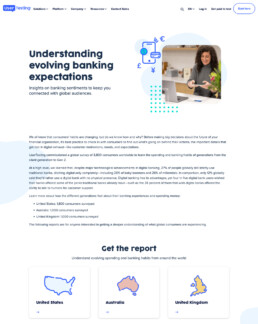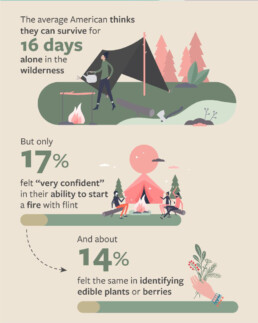Running an online survey can be overwhelming — finding the correct panel, making sure you’re asking the right questions, all while ensuring the survey is in line with the correct standards. We get it!
Here are 10 common questions we receive from PR and marketing professionals looking to work with us, to help simplify the process for you.
1) How many respondents should be surveyed?
Our standard PR survey is 2,000 Americans — this is the sweet spot for the cost (incentivizing respondents), time in the field and a low margin of error.
Polling fewer respondents (for example, 1,000) would lower the cost and the time in the field, but at a detriment to the margin of error. Polling more respondents (for example, 3,000) would increase the cost and the time in the field, but the margin of error wouldn’t change by enough to make it worth it.
Not only that, but 2,000 respondents also consistently allows us to delve into our main splits: age, gender and region. In order to have statistically significant data, you need a minimum of 80 respondents (though 100 or more is always better!) — 2,000 respondents means we typically have significant data for most of our splits, allowing us to report on that data.
This standard of 2,000 respondents can change for niche panels and international surveys though.
For example, we see a lot of success with state-by-state samples, but 2,000 isn’t enough to get data from all 50 states; instead, we typically poll 5,000 respondents for a state-by-state survey. As we did for this “EV acceptance” study for Polestar and for a 2022 “holiday heatmap” campaign for Hershey.
And with international surveys, we often like to have 1,000–2,000 respondents per country, though that can vary based on the country’s size.
Samples for niche panels, including international surveys and any other atypical surveys can be determined with the help of the OnePoll team to ensure the most efficient number of respondents for the survey.
In an international research project for software company GoTo, for example, we polled 3,700 business owners and executives across America, the UK, Germany, France, Australia, India, Malaysia, Philippines and Singapore.
The specialist nature of the panel allowed for a smaller sample size in each country, and the study revealed the different attitudes toward a potential economic downturn and how businesses were planning to prepare for it.
2) What do “general population” and “nationally representative” mean?
A general population survey means there aren’t any specific quotas set; the data will be filled by the first 2,000 people to take the survey (allowing for quality-checking measures, of course).
On the other hand, a nationally representative survey will include quotas for age, gender and region — ensuring the final data is representative of the U.S. population in those three areas.
There’s benefits to both general population and nationally representative surveys; because gen pop surveys don’t have quotas, they’re typically much faster to field, but nat rep surveys allow for weightier claims. We recommend nat rep surveys for “heavier” topics (medical and health care stories, opinions on government regulations, sustainability, etc.) and gen pop works best for “lighter topics” (parenting, pets, travel, etc.), but both types of surveys are fully accepted by the media.
3) How do you identify the right panel for a survey?
It’s not uncommon to have clients approach us with a panel already in mind for the survey — for example, the target demographic of the brand — but the questions they want to ask don’t always align. To get the best data from the survey, you need to look at what questions are being asked and determine the panel from there.
For example, if you want to ask respondents about student loans, you’ll likely want a panel of people who have attended college or who have taken out student loans. If you’re looking to gain insights about back-to-school shopping, you’ll want to poll parents who have school-aged children. The key is ensuring the respondents who enter the survey are able to provide an opinion on the questions you’re asking.
4) What panels are you able to poll?
OnePoll has the ability to poll a wide variety of panels — general population, nationally representative, state-by-state, pet owners, parents of school-aged children, etc. We also have the capability to poll internationally: we have a strong panel in the UK, through our sister company, but we’re able to reach a plethora of other countries, too.
We recently worked with UserTesting on this online study of consumers in the US, UK and Australia, exploring the generational differences in spending and banking habits. The research formed the basis of a media campaign, and the brand also produced three country-specific reports from the data.
We also conducted a large global research project for Herbalife that asked 28,000 respondents from 30 countries about their eating habits during the pandemic. OnePoll delivered data tables for each country, alongside merged data for economic areas and all countries, and the research findings were released as a news story to the media, securing extensive coverage.
To ensure we’re polling the correct panel within the survey, we’ll use “screener questions.” These will screen out respondents who don’t fit the correct demographic, leaving only the respondents we want to actually complete the survey.
5) How do you find the right incentivization rates?
The incentive rate can increase or decrease for two main reasons: who we’re polling and the length of the survey.
If it’s a niche sample, we’ll need a higher incentive rate in order to target that demographic. For example, a survey of pediatricians would be more expensive than a survey of dog owners. There are fewer pediatricians, and they’re likely to be busier (and therefore less likely to be taking online surveys), meaning we have to work harder to reach them.
And the longer the survey, the higher the incentive, since you’ll be requiring more time from respondents. We want to ensure respondents stay engaged until the very end, so we need to make it worthwhile for them to pay attention and provide accurate answers.
6) How is the data presented?
After the survey has been completed and quality checked, OnePoll will export the data in an easy-to-read Excel file. This will include a “standard” tab that shows all the data, along with tabs for our “splits” — typically, this will break the data down by respondents’ age, gender and region. That’s not all we can do, though, as most questions within the survey can be used as a split. For example, a survey of pet owners may be interesting to see by a split of dog owners vs. cat owners — or a survey of parents with school-aged kids may benefit by a split of the child’s age (knowing parents of an elementary-school child may have very different opinions from that of a parent with a child in high school). We can also do cross-tabulation, which would show, for example, a tab based on respondents’ age and gender.
Not only that, but OnePoll can also put together executive summaries and data visualizations as alternative ways to understand the survey data. These are more straightforward, highlighting the key data points and saving the time of needing to comb through the Excel report.
7) What standards does OnePoll follow?
Surveys conducted by OnePoll follow market research standards and best practices outlined by the Market Research Society. The team are also each members of the American Association for Public Opinion Research (AAPOR) and the European Society for Opinion and Marketing Research (ESOMAR).
8) What kinds of questions can you ask within the survey?
OnePoll is able to ask a variety of different question types! Our software provides us with upward of 25 different options for question types.
Common questions include:
Yes/no
Five-point agreement scales
Frequency
Multiple-choice lists
Free text responses
But we can also include photos within the survey, as well as audio — for example, we ran a survey for Avocado Green Mattress which asked respondents to identify different photos of plants and trees to test how much they know about nature. We also ran a research project for QuinStreet’s Insurance.com which showed Americans photos of license plates and asked them to identify their favorite. And in a story for SWASH Laundry Detergent we used different symbols from a washing machine to test respondents’ laundry knowledge.
Depending on what insights are hoping to be gained, OnePoll will select the best question type — ensuring we get the best possible data while staying compliant with market research standards.
9) How do you find panelists — and can I use my own?
OnePoll is an online survey company; panelists are able to sign up online on our platform. By having them “register” with us, we’re then able to keep track of our panel’s size, demographics and overall capabilities. This also allows us to better quality-check our surveys.
We would almost always recommend using OnePoll’s panel to run your survey, but there are exceptions, and we are able to do what we call “white-label” surveys, which would use an alternative panel source.
One example of an effective white-label survey was a research project we ran for a software company. We built the survey link, ensuring the questions were compliant with market research standards, then passed that over to our contact, who shared the link with all the employees at their company — it’s a trusted internal panel and a demographic that logically, OnePoll wouldn’t be able to reach through our own panel (since not every employee will be signed up to take our surveys).
Another example of a great white-label survey was run with Groupon. They wanted to do a survey for Black Business Month in August, and they partnered with the Black Chamber of Commerce to poll black business owners — our news generation partner 72Point took the data and turned that into a piece of news copy, which then garnered incredible results for Groupon, landing on a variety of sites including this article on The Hill.
10) Why use OnePoll, versus a DIY survey platform?
There are a few key things OnePoll has that DIY survey platforms don’t.
The first is OnePoll’s accreditations — using a DIY platform doesn’t ensure the questions are compliant with market research standards. It’s easy to ask survey questions that are leading, but that means the data will be questionable, and that it won’t hold up to scrutiny from journalists or publications. OnePoll does a thorough check over every single question before a survey goes live to our panel, ensuring it meets the current research standards.
Second, the OnePoll panel: using a DIY platform, there’s no real way to know who’s answering your survey. Because OnePoll panelists have signed up through OnePoll, we can track basic information — for example, if they’re speeding through surveys or answering in patterns (both of which show they’re not paying attention), we can then block them from the panel and prevent them from taking future surveys. This ensures the final respondents are quality, and the results are trustworthy.
Third, OnePoll is backed by 72Point, and every survey is reviewed by our editorial team — they’ll offer advice on what questions to ask or insights to look for, with the goal of getting the best data, regardless of what it’s needed for.
Hopefully this has helped answer some of your questions! There’s a lot to consider when running an online survey, but research experts like OnePoll are here to help. You can read more of our Frequently Asked Questions here. If you would like clarity on the above or would like to speak to our team, please reach out at hello@onepoll.us.
OnePoll has been conducting custom research and PR surveys for 20 years. We provide custom research services to brands, agencies and the media. As members of AAPOR — the American Association for Public Opinion Research, OnePoll researchers adhere to the principles and actions set out in the AAPOR Code. Our research team are also members of ESOMAR and MRS. Like to know more? Talk to our team or request a rate card.
Featured image photo credit: Hi! Estudio





